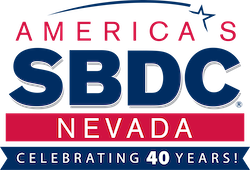Small Business Technology Transfer (STTR)
FACTS ABOUT STTR
The Small Business Technology Transfer (STTR) program was established by Title II of the Small Business Research and Development Enhancement Act of 1992, Public Law 102-564, to foster innovation necessary to meet the nation’s scientific and technological challenges of the future. This three-phased program provides the opportunity for qualified small businesses to collaboratively work with non-profit research institutions on research or research and development (R&D) projects. Federal agencies with more than $1 billion of extramural R&D must reserve 0.3% of their budgets for R&D small businesses and their partners. This set-aside currently results in the availability of approximately $65 million for fiscal year 2001. STTR was recently reauthorized through 2009.
STTR is much like that of the Small Business Innovation Research (SBIR) program. Its unique feature is its requirement that the small business work jointly with a non-profit research institution. A minimum of 40% of the work must be performed by the small business and a minimum of 30% by the non-profit research institution. Such institutions include Federally-funded research and development centers (FFRDCs), universities, university affiliated hospitals, and other non-profits.
Objectives of STTR
- Stimulate technological innovation
- Strengthen the role of small businesses in meeting Federal Research and development needs
- Increase private sector commercialization of innovations derived from Federal research and development.
Participating Federal Agencies
- Department of Defense
- Department of Energy
- Department of Health and Human Services
- National Aeronautics and Space Administration
- National Science Foundation
Small Business Eligibility
- 500 or less employees
- American-owned and independently operated
- For profit
Research Institution Eligibility
- Located in US
- Must be one of the following non-profit organizations:
- University/college
- Domestic research organization
- University-affiliated hospital
- FFRDC (Federally Funded Research and Development Centers)
Three Phases
STTR is a three-phase program of which two are Federally funded. Phase I is a feasibility study to evaluate the proposed project’s technical merit for which an awardee may receive a maximum of $100,000 for approximately one year. Phase II is the principal R&D effort which expands on the Phase I results. This two-year project may receive up to $500,000 in funding. Only Phase I awardees are eligible to compete for Phase II funds. Phase III is the commercialization of the Phase II results and moves the innovation from the laboratory to the marketplace. This requires use of private sector or other non-SBIR funding.
Evaluation Criteria
- Scientific and technical quality and innovativeness of the idea and the significance of the scientific or technical challenge
- Ability to carry out the project, i.e. qualifications of the principal investigator and other key personnel, adequacy of facilities and equipment, soundness of work plan
- The impact as evidenced by technical and/or economic benefits, the likelihood that the work would lead to a marketable product, or the likelihood the project could attract further funding.
Submission
Each year the five participating agencies issue program solicitations describing the technical areas for which they are interested. The solicitations, their release and due dates, and submission instructions are available at each agency website.
Assistance
Operating procedures vary between the agencies, so it is wise to become familiar with the agencies by viewing their websites and/or contacting them as appropriate.
